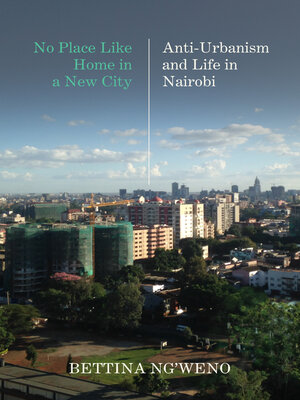No Place Like Home in a New City
ebook ∣ Anti-Urbanism and Life in Nairobi
By Bettina Amilie Ng'weno

Sign up to save your library
With an OverDrive account, you can save your favorite libraries for at-a-glance information about availability. Find out more about OverDrive accounts.
Find this title in Libby, the library reading app by OverDrive.



Search for a digital library with this title
Title found at these libraries:
| Library Name | Distance |
|---|---|
| Loading... |
A free ebook version of this title is available through Luminos, University of California Press's Open Access publishing program. Visit www.luminosoa.org to learn more.
Nairobi, known as the Green City in the Sun, has taken shape through anti-urban ideologies that insist that the city cannot be home for most residents. Based on decades of experience in rapidly changing Nairobi, No Place Like Home in a New City traverses rivers, cemeteries, parks, railways, housing estates, roads, and dancehalls to explore how policies of anti-urbanism manifest across time and space, shaping how people live in Nairobi. With deeply personal insights, Bettina Ng'weno highlights how people contest anti-urbanism through their insistence on building life in the city, even in the current dynamic of ubiquitous demolition and reconstruction. Through quotidian practices and creative resistance, they imagine alternatives to displacement, create belonging, and build new urban futures.
Nairobi, known as the Green City in the Sun, has taken shape through anti-urban ideologies that insist that the city cannot be home for most residents. Based on decades of experience in rapidly changing Nairobi, No Place Like Home in a New City traverses rivers, cemeteries, parks, railways, housing estates, roads, and dancehalls to explore how policies of anti-urbanism manifest across time and space, shaping how people live in Nairobi. With deeply personal insights, Bettina Ng'weno highlights how people contest anti-urbanism through their insistence on building life in the city, even in the current dynamic of ubiquitous demolition and reconstruction. Through quotidian practices and creative resistance, they imagine alternatives to displacement, create belonging, and build new urban futures.







